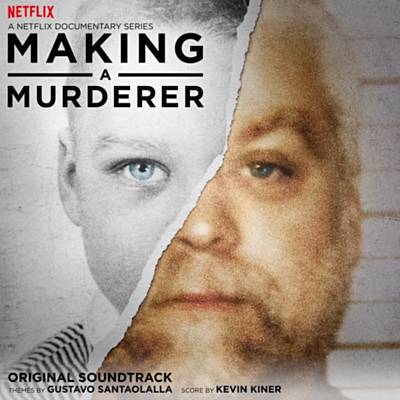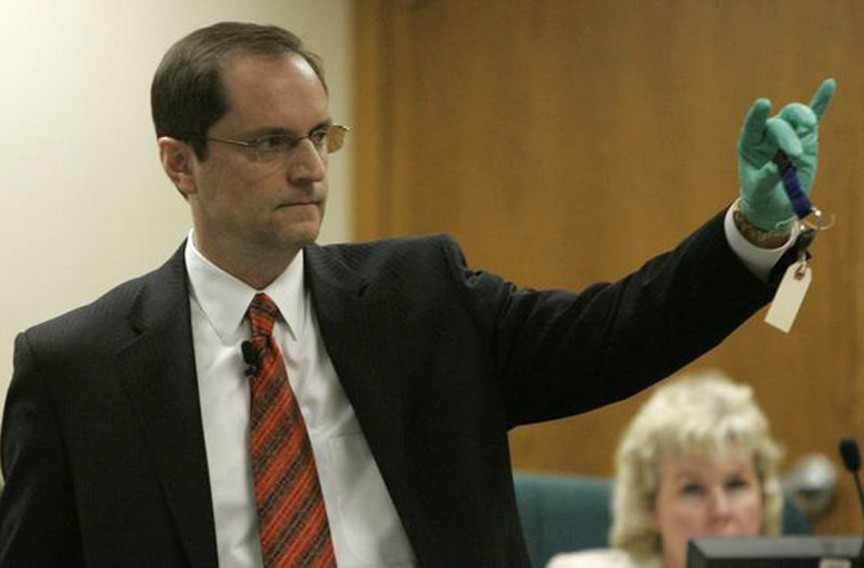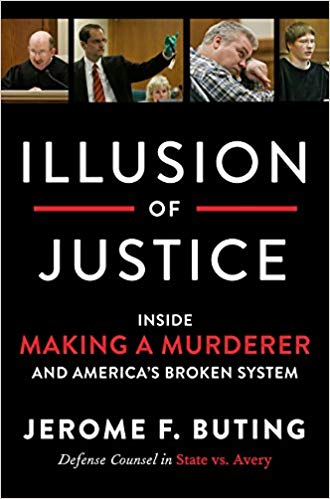‘Making a murderer’ – Interview with Netflix’s star Jerome Buting
Any true crime series fan must have seen Netflix’s documentary “Making a murderer”. The story has such a tremendous plot, that it easily keeps you attached by the TV.
The show tells the story of Steven Avery, a man from Manitowoc County, Wisconsin, who served 18 years in prison for the wrongful conviction of sexual assault and attempted murder of Penny Beerntsen. The DNA evidence ultimately set Mr. Avery free. His release eventually encouraged a reform package that resulted from Steven Avery’s exoneration in 2003 in order to improve the state’s criminal justice system and to lessen the chance that innocent people are imprisoned. However, this is not just a simple story about a wrongful conviction. What follows, makes this story so intriguing. After he was emerged from prison, Avery then enjoyed two years as a free man, in which he began to file a $36million lawsuit against Manitowoc County for his wrongful conviction. Almost 2 years after his release, he was again charged in 2005 and though he has long maintained his innocence he was convicted in 2007 for the murder of Teresa Halbach. Avery is currently serving a life sentence, without the possibility of parole, at the Waupun Correctional Institution in Wisconsin for the crime.
The Steven Avery case has definitely caught the attention of American public. During the trial, his lawyers argued that the county police officers framed Avery for the murder to avoid the impending lawsuit. Despite his second life time conviction, many people still firmly believe in Steven Avery’s innocence and have a disappointing attitude towards America’s legal system.
Being a huge fan of the series, I was very grateful to meet one of the defense lawyers from the series and Steven Avery’s former lawyer Jerry Buting. Alongside his co-counsel, Dean Strang, Buting defended Avery in his now-infamous 2007 trial. It was a major case at the time, but even more so after the release of Making A Murderer in 2015. Buting has been practicing law as a criminal defense lawyer for 38 years. He also speaks frequently around the world about his experiences in America’s criminal justice system. Buting also wrote a book, Illusion of Justice: Inside Making a Murderer and America’s Broken System which he published in 2017 (you can order a book via https://www.buting.com/).
I am grateful that Mr. Buting found time and agreed to give a short interview for Violence Research Lab as follows:
Your book is called “Illusion of Justice: Inside Making a Murderer and America’s Broken System”. Can you tell us, what are the key things that make America’s legal system broken?
There are so many things I had to right an entire book! I’ll focus on just a few here.
One chronic problem is the lack of adequate funding for the defense of poor people, who comprise 80% or more of all criminal cases in America. (Why we over-prosecute the poor in America is another, larger concern). Public defenders (the European equivalent of legal aid), on average, receive a small fraction of the money that goes to law enforcement and prosecution. America’s justice system is based on an adversarial system, with a belief that advocates on both sides will present the best evidence and the fact-finder (judge or jury) can discern the truth. But when one side is vastly better funded, the scales are tipped, the truth sometimes isn’t brought out and miscarriages of justice occur. This is especially likely to occur when defense lawyers are paid so little that they are of poor quality or too inexperienced and poorly trained, or their caseloads are so high that they cannot spend the time necessary to present an adequate defense. This applies not only at trial, but also with plea bargaining and sentencing, where prosecutors and judges just aren’t presented a fair picture of the defendant. Even if he or she is guilty there are usually mitigating circumstances that should be explained.
The second major flaw is America’s “social addiction” to very long prison sentences for offenders. The vast majority of crime is committed by offenders between the ages of 17-25. After that, most will mature out of crime, if given a reasonable attempt to rehabilitate them. Yet American judges hand out decades of prison terms for very young offenders, so that they are middle aged or elderly when they get out eventually. Instead of sentencing someone to no more than 5 or 10 years, they get 20, 30, 40 years or more. Even for non-violent offenses in some states. That’s just insanely bad public policy and an unnecessary expense of tax money. In the state of Wisconsin, for instance, we have been spending much more on prisons than all University of Wisconsin campuses combined. The same is true in most of America so that a country with 5% of the world’s population has 20% of the world’s incarcerated persons. Political demagogues are partly to blame, because they scare the voters into believing that they are in danger if they don’t lock offenders up for many decades. In truth, there is a very small percentage of offenders who need that kind of prison term to protect the public. The rest are being warehoused, wasting lives, with no justification. This is finally beginning to change in some parts of America, even conservative states like Texas, where reform-minded legislators and prosecutors are reducing the length of new prison terms. But we have a long way to go.
Another serious flaw is the use of flawed forensic science in court, some of which is not worthy of being called science at all. Popular television and movies like CSI give the mistaken impression that crimes can always be solved with certainty by forensic evidence. In reality that is not true. Much of the so-called science shown by Hollywood – like microscopic hair comparison, bite marks, and other “pattern matching” fields – have been proven fatally flawed or bogus evidence. DNA exonerations have proven hair comparison and bite mark evidence to be wrong so many times that the FBI and many scientists will no longer use such evidence. Yet most courts still accept the evidence because it was once considered reliable and old cases upheld its use. There is a serious tension between science and the law, and people can be wrongly convicted as a result. Science is constantly evolving, future-looking, and prior flawed beliefs are discarded or improved upon. The law relies on “precedent,” so it’s always looking backwards, and outcomes may be controlled because some case 40 years ago ruled bite mark evidence to be reliable and admissible. This is one reason I helped create the Center for Integrity in Forensic Science (www.cifsJustice.org) to improve the reliability of valid forensic evidence and help discard the bad. That requires collaboration between real scientists and criminal justice system actors, and training judges and lawyers to know good science from bad.
Croatia constitutionally abolished capital punishment in 1990. In some states, you still have the death penalty prescribed by your law. What do you think about that and do you think that it is a step back in our civilization upgrading and presents a negation of the world of strong human rights protection we live in today?
I believe capital punishment is an abomination and should be abolished throughout the world. There has never been a system devised that applies the punishment in America fairly, without regard to race, ethnicity, economic status or religious identity. Even when guilt is clear, and the defendant’s acts are evil (such as terrorism) the government should never be in the business of taking a person’s life. I’m Catholic and that has always been my faith’s strong stance, with no exceptions granted no matter how heinous the offense.
There has been a recent trend in America to abolish capital punishment. More and more states in the last 10-15 years have done so, and most states that have the punishment rarely use it. There are some states, like Texas, which execute more people each year than all the other states combined. They just executed a man a few weeks ago who could very likely have been innocent, and the state fought successfully to prevent him getting a DNA test that could prove it. Instead they killed him. I think most Americans reject that kind of justice, but American has 50 separate state justice systems and some voters disagree with the rest of the country. But I am hopeful that there is a downward trend in the use and prosecution of capital punishment, in part because DNA exonerations of many, many people who were on death row has shaken the public’s faith in the reliability of outcomes in American Justice. The Netflix docuseries Making a Murderer has also shown the flaws in our justice system, so many are troubled at the use of the “ultimate punishment” – death, for which there can be no correction for errors discovered later.
I have to ask you about the Steven Avery case. What is the most difficult thing you had to face during these proceedings? Did you lose your faith in justice system?
The pretrial negative publicity engendered by the prosecutor’s inflammatory press conference was the biggest challenge. Getting a fair jury after that was just impossible. It’s not just the jury system that can be influenced by such inflammatory publicity. I think the Amanda Knox case in Italy is another example of tabloid journalism run amok, and I think it influenced the judges (and public) in the early stages. Nevertheless, Italy’s justice system ultimately rose above that publicity and thorough, dispassionate re-examination caused her conviction to be reversed. Some no doubt still think that was unfair, but the world’s respect for Italy’s justice was enhanced by the ultimate outcome. The same is not true in America, where not only Steven Avery, but Brendan Dassey remain in prison. Reversing a conviction – even when there is a miscarriage of justice—is extremely hard in America. It has taken decades of imprisonment for many wrongly convicted to get out. I represented a man for 15 years before I finally got him release and his case dismissed – but that was not until he had been imprisoned for 29 years.
I was extremely disappointed to lose the Steven Avery trial, but viewers of Making a Murderer saw what we were up against. I believe he is innocent and that there was an abundance of reasonable doubt at the end of the trial. I have been close to losing faith in American justice many times. But I always come back to fight again for another, because I know that people need me and lawyers like me to help them fight for justice. They cannot do it alone. Most of my career has seen a regression in real fairness, in my view, in the American criminal justice system. But there is a groundswell of support now to reform its worst flaws. So, I have guarded faith.

Image source
You have a background in forensic sciences and I assume it helped you a lot in Steven Avery’s case. However, forensic science is a young discipline which is still developing. What are the main misconceptions of forensic science that people usually have?
As I mentioned, many think that forensic science can objectively discern guilt or innocence in every case and that is just not true. It can sometimes help provide a piece of evidence one way or the other. But DNA exonerations have shown that many times the forensic evidence presented was really wrong. The defendant was innocent and wrongly convicted with the aid of flawed science. Even DNA evidence is not as probative of guilt as it used to be, because the tests are so sensitive that they can obtain a full DNA profile from just a few cells. It used to be if they found someone’s DNA at a crime scene it was strong evidence of guilt because large quantities were required. But if only a few cells show up, that raises the possibility of innocent transference. Tests have proven a person’s DNA can be transferred to the crime scene or murder weapon by the real perpetrator or an object even when the innocent person whose DNA is found was never at the scene or handled the weapon. So finding DNA at a crime scene is not necessarily as conclusive evidence of guilt as it used to be.
Each of the fields of forensic science must be willing to examine itself to be sure that it is as scientifically valid, reliable and objective as humanly possible. That means the many types of forensic evidence that have never been truly scientifically validated (and that includes EVERY pattern matching forensic evidence with the exception of DNA) must undergo rigorous examination as to its science and method. Young forensic scientists must not accept old beliefs unless and until they have been shown to be valid and reliably replicated using the scientific method, and that includes “blind testing” to reduce the risk of cognitive biases.
Is it true that, in United States poor people who cannot afford expensive attorneys, simply lose their cases? Are the trials in America a story telling competition that do not seek justice?
Money makes a difference in the criminal justice system as it does in most areas of life. I mentioned earlier the chronic under-funding of the defense of poor people. That does not mean that poor people always lose in the end, but they certainly have an increased risk of losing than someone with financial means. Poor people are also often held in jail before trial because they can’t post bail, and that increases the likelihood of conviction. It is harder to defend yourself when you are locked up and have only limited contact with your lawyer.
As I said, America uses an adversary system of justice, and that -by design- pits two different sides against each other that may have two different viewpoints or “stories” to tell. Prosecutors are told repeatedly that winning a case is not their goal; it is to seek justice even if that means an acquittal of the defendant. In practice, however, a trial is a hard fought competition and prosecutors in America often seek to win at all costs. Some prosecutors are so focused on winning that they develop an “ends justifies the means” mentality. They may even withhold evidence that could exonerate the defendant, or encourage false testimony from jailhouse snitches who have every motive to lie and improve their own situation, or engage in other corrupt practices.
In my opinion, America’s competitive social mentality is more to blame than the adversary system of justice. I watched the closing argument in a murder trial in Scotland a couple of years ago and I found the prosecutor’s and defense attorney’s presentations to be very fair and respectful of each other. Even though Scotland uses the same adversary system of justice as we do, I could not imagine most prosecutors in America being as fair in his or her closing summations as this prosecutor was. It’s a shame, because I still believe our jury system and adversary system can work beautifully if the participants are mindful of their roles and respect each other.
If you had to make an assessment, what would you say, how many people are being wrongfully convicted, sitting in prison innocent at this moment in America?
This is a difficult matter to estimate, because most cases do not have biological evidence to test for DNA that may prove whether they are innocent. Others have studied this question pretty carefully and tried to make reasonable assumptions. I have read of estimates between 1%-8% of people in prison are wrongfully there. Even at the low end of 1%, that’s still a huge number because American has about 2 million people incarcerated. The estimates are, therefore, that between 20,000 and 160,000 are innocent sitting in prison. Many have such long sentences and no DNA to exonerate them such that they could very well die in prison.
Does having a jury during criminal proceedings help you or damage your cases most of the time? Do you think that if you had to defend Mr. Avery in a non-adversarial justice system, where a judge, and not a jury, makes a final decision whether a defendant is guilty or not, that the outcome in his case would be different?
Many countries that do not use jury trials are amazed at America juries, and blame the flaws shown in Making a Murderer on our flawed jury system. I think that played a part, no doubt, in the Avery case. We were left with a jury that had been polluted by negative pretrial publicity and was shaped by the prosecutor’s strikes to be a less educated than average jury. Still, according to one juror, the first vote during deliberations was 7 not guilty, 3 guilty and 2 undecided. We were close, but not enough. In America a defendant can choose to waive a jury trial and rely on a judge to render a verdict. I almost never do so, no matter how fair I may think the judge is, because 12 minds are usually better than one. Plus, many judges become jaded and think everyone is guilty. I never had the sense the judge in Steven’s case would give him a fair shot and he would not have rendered any better verdict than the jury. Its especially a problem when judges are elected as they are in half the states of America. The political pressure on a judge who has to run for election if they acquit in a case where there has been high, negative pretrial publicity is immense. They can’t withstand that in a smaller county. Avery’s judge would have been run out of office at the first chance if he had acquitted, even if he honestly had reasonable doubt.
What role did the media play in Steven Avery’s case? Do you think that nowadays media strongly follows the maxim “if it bleeds, it leads” and that we have lost journalist ethics and objectivity?
I’ve talked about the negative pretrial publicity in Avery’s case, but once the trial began and the reporters at the trial started to hear the other side, they were amazed. Before trial, they thought the state’s case was strong, but now they learned much that was previously not public. They understood after awhile that this was a close case and that much of the state’s evidence was suspect. That showed in some of their questioning of the attorneys in the daily press conferences we held. Those press conferences were unusual. They don’t happen in most cases. But they were limited to discussions about what happened in court each day, not what was coming up. Still, despite the scepticism of the state’s case that the reporters who were actually in court seemed to feel, that did not translate to the short 2-3-minute reports that actually aired on the nightly news. Whether those were decisions made by higher up editors and producers at the television stations I can’t say. But the coverage actually reported to viewers was less balanced and sceptical of the state than individual reporters on scene expressed. I won’t say that’s an example of loose journalistic ethics, it’s just an observation I made as the trial progressed.
Keep in mind that, today, a bigger threat to journalistic ethics is the explosion of social media as a “news” source for many. There are no editorial constraints in that media, and much of what is “reported” there is misleading or downright false.
Do you think that criminal law makes an efficient/or even suitable framework for dealing with the violence in society or there are some non-legal institutions that would do a better job at preventing crime, such as family, school, education, social policy etc.?
Criminal law has proven to be a very inefficient, expensive and failed effort to address violence and other ills in our society. Much violence occurs without any forethought of the punishment that will occur if caught, so the law does not deter very well. Unfortunately, for many complex reasons there has been a breakdown of traditional institutions like religion, family and schools that would be better suited to address these problems and prevent violence from occurring. Society must spend more money and effort understanding what causes crime and violence so we can prevent it, rather than trying to pick up the broken pieces left after it occurs.
How much do judges take into account the knowledge from criminology, esp. regarding the etiology of crime?
This is an excellent question and sadly I think they pay very little attention to the etiology of crime. I have sometimes tried to work criminology studies into a sentencing proposal, but rarely has it had any effect. Judges need to be trained outside of a judicial proceeding about the knowledge that criminology can bring to the table. Sentences would be more just, more tailored to the cause and less focused on pure punishment if they knew more about what causes crime, in a society and in an individual.
Note: By the time this interview was made, according to CBS media a Wisconsin inmate has apparently confessed to the killing of Teresa Halbach, whose murder case was documented in the 2015 hit Netflix series “Making a Murderer.” It remains to be seen just how this story with so many twists will end for Steven Avery.


